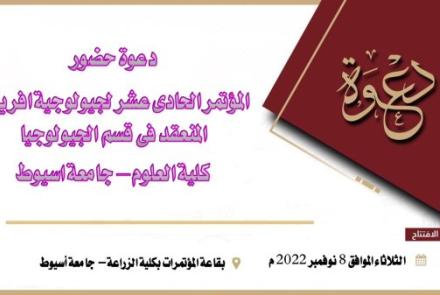Do you have any questions? (088) 2345643 - 2412000 sci_dean@aun.edu.eg
Research Article Synthesis, Structural Characterization, and Preclinical Efficacy of a Novel Paclitaxel-Loaded Alginate Nanoparticle for Breast Cancer Treatment
Corrigendum to: “Synthesis of polyethylene/silica-silver nanocomposites with antibacterial properties by in situ polymerization”
Spectrophotometric determination of Metronidazole antibacterial drug via oxidation with alkaline potassium permanganate
Markers of local and systemic estrogen metabolism in endometriosis
. Synthesis, Characterization and Photophysical Properties of Some New Thieno[2,3-b]pyridines bearing phenylethenyl moiety
The antimicrobial, antibiofilm, and wound healing properties of ethyl acetate crude extract of an endophytic fungus Paecilomyces sp. (AUMC 15510) in earthworm model
The endophytic fungus Paecilomyces sp. (AUMC 15510) was isolated from healthy stem samples of the
Egyptian medicinal plant Cornulaca monacantha. We used GC–MS and HPLC analysis to identify the
bioactive constituents of ethyl acetate crude extract of Paecilomyces sp. (PsEAE). Six human microbial
pathogens have been selected to evaluate the antimicrobial activity of PsEAE. Our data showed
that the extract has significant antimicrobial activity against all tested pathogens. However, the
best inhibitory effect was observed against Bacillus subtilis ATCC 6633 and Pseudomonas aeruginosa
ATCC 90274 with a minimum inhibitory concentration (MIC) of 3.9 μg/ml and minimum bactericidal
concentration (MBC) of 15.6 μg/ml, for both pathogens. Also, PsEAE exerts a significant inhibition on
the biofilm formation of the previously mentioned pathogenic strains. In addition, we evaluated the
wound healing efficiency of PsEAE on earthworms (Lumbricus castaneus) as a feasible and plausible
model that mimics human skin. Interestingly, PsEAE exhibited a promising wound healing activity and
enhanced wound closure. In conclusion, Paecilomyces sp. (AUMC 15510) could be a sustainable source
of antimicrobial agents and a potential therapeutic target for wound management.
On the Omega distributions: Some properties and Estimatio
Explicit expressions for single moments, recurrence relations for single and product 1
moments of order statistics of the omega distribution are derived. The L-moments are also obtained. 2
We also consider different methods for estimating the model parameters, namely: maximum 3
likelihood, maximum product of spacings, ordinary least-squares and weighted least-squares, 4
percentiles, Anderson–Darling and right–tail Anderson–Darling. For different parameter settings and 5
sample sizes, various simulation results are performed to compare the performance of the proposed 6
estimators. Further, the method of maximum likelihood is adopted to estimate the omega parameters 7
under type-II censoring scheme. The flexibility of the omega distribution is proved by means of a real 8
data set.
The optimal concentration of silver nanoparticles in sterilizing fish skin grafts
Collagen integrity should be considered on using a sterilizing agent for fish skin grafts. This study
defined the optimal concentration of silver nanoparticles (Ag NPs) for sterilization of fish skin
grafts without disrupting collagen content based on microbiological and histological evaluation.
Strips of tilapia skin (n = 5) were randomly allocated to be immersed in Ag NPs solution at different
concentrations of 25, 50, 100, and 250 μg/mL, respectively, for 5 min. The treated skin strips
underwent bacteriological and histological evaluation. Yeast and fungi were more sensitive to Ag NPs
than bacteria. On increasing the nanoparticles concentration, the total counts of aerobic bacteria
decrease giving 933.3 ± 28.67, 601 ± 27.66, 288 ± 16.8, 15 ± 4.08 (CFU/cm2 ± S.D) at 25, 50, 100, and
250 μg/mL, respectively, comparing with untreated sample (1453.3 ± 57.92). Yeasts and filamentous
fungi also exhibited a similar response, achieving a complete inhibition at 100 and 250 μg/mL. Bacillus
cereus and Escherichia coli were the dominant aerobic bacteria, Candida albicans and Rhodotorula
glutinis were the dominant aerobic yeasts, whereas Aspergillus niger, Aspergillus fumigatus, and
Rhizopus stolonifer were the dominant aerobic fungi. The collagen fibers were loose with a wavey
pattern at 25 μg/mL, wavey and slightly disorganized at 50 μg/mL, highly disorganized at 100 μg/
mL, and compactly arranged and slightly loose at 250 μg/mL. Ag NPs at a concentration of 250 μg/
mL could be considered a reliable and feasible method for the sterilization of fish skin grafts before
application on human skin with an effective antimicrobial effect and less disrupting impact on collagen
content.


